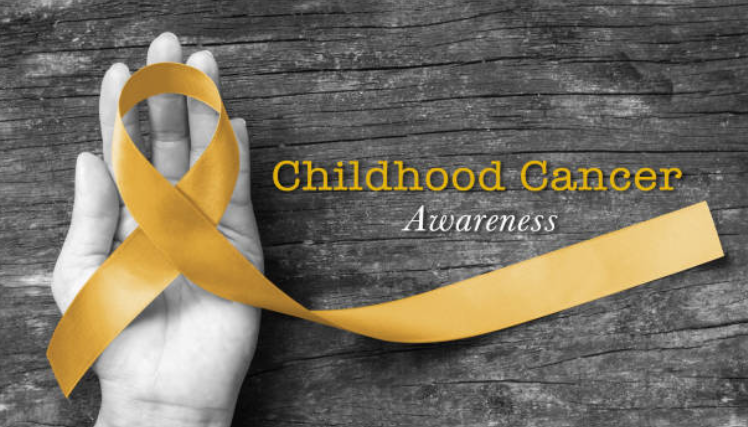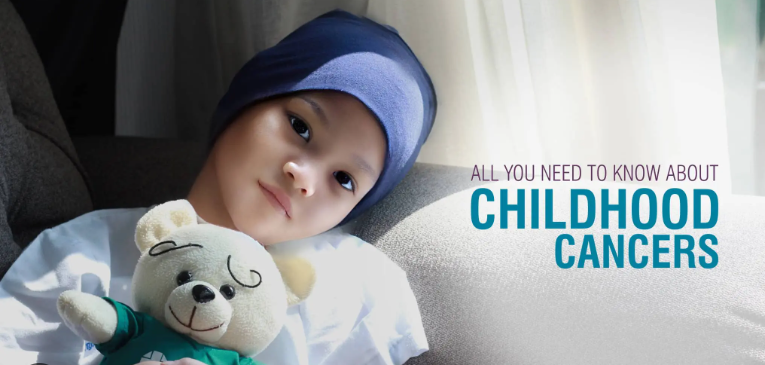Dispelling falsehoods is essential to improving public awareness of childhood cancer, providing support to impacted children, and ensuring that they face their difficult journeys with hope and resilience.
Childhood cancer is a topic fraught with numerous myths that often contribute to misconceptions and unwarranted fears. Debunking these myths is imperative for fostering a better understanding of childhood cancer, supporting affected children, and ensuring they navigate their challenging journeys with hope and resilience. But, before talking about the myths, let’s have a look at the causes of childhood cancer:
Also read-Insomnia : A Patient’s Guide To Insomnia And Its Symptoms

Causes of childhood cancer
Dr. Vasudeva Bhat K, M.D. (Pediatric Oncology), who is an Associate Professor and In Charge Head, Division of Pediatric Hematology and Oncology at Kasturba Medical College, Manipal Academy of Higher Education, Manipal, said, “Childhood cancers are unique types of cancers, the etiology of which is uncertain, but the majority of these cancers are curable if diagnosed early. In India, it is estimated that nearly 78,000 children <19 years of age are diagnosed with one or the other form of cancer.”

Common cancers seen in childhood include acute leukemia (blood cancers), solid tumors arising from organs like adrenal gland neuroblastoma, kidney Wilms’ tumor, and brain tumors like medullary lymphoma. The most common type seen in childhood is blood cancer, followed by brain tumors.

The genetic disorders include:
- Inherited genetic changes, Which are transmitted from parents
Example: Retinoblastoma: A tumor of the eye can be inherited from parents if the parents had the tumor in childhood. Similarly, Li-Fraumeni syndrome, Beckwith-Wiedemann syndrome, Fanconi anemia, and von Hippel-Lindau syndrome also have an increased risk of childhood cancer.
- Genetic changes early in development
Example: Children with Down’s syndrome are 10–20 times more likely to develop leukemia than children without Down’s syndrome.
The environmental exposures that lead to cancer formation in children include exposure to cigarette smoking, prolonged UV ray exposure, exposure to repeated ionising radiation like CT scans, exposure to pesticides and certain viral infections.

Myths in and around childhood cancer
Now that we know the causesAlso read: Let’s delve into the myths and misconceptions related to childhood cancer as addressed by experts. According to Dr. Amish Vora, who is a pediatrician and neonatal intensivist at Bhatia Hospital, Mumbai, “one prevalent myth asserts that a diagnosis of cancer in children is synonymous with a death sentence, signaling an end to their lives. Contrary to this grim belief, advancements in cancer treatments over the last two decades have significantly increased survival rates.”

Myth 1: Childhood Cancer Is Rare
Fact: While childhood cancer is less common than adult cancer, it is not as rare as is often believed. According to the American Cancer Society, approximately 1 in 285 children in the United States will be diagnosed with cancer before the age of 20. Childhood cancer rates may vary, but it is crucial to recognize that it is a significant health concern that affects numerous families worldwide.
Myth 2: Childhood Cancer Is Preventable
Fact: Unlike certain adult cancers that can be linked to lifestyle factors such as smoking or a poor diet, childhood cancer prevention is not well understood. Many pediatric cancers occur due to genetic mutations or factors that are not preventable. Regular pediatric check-ups and early detection can, however, improve outcomes.
Myth 3: Childhood Cancer Only Affects Older Children
Fact: Childhood cancer can occur at any age, from infancy to adolescence. Each age group may have specific types of cancer more commonly associated with it, but it is essential to be aware that cancer can affect children of all ages.
In addition, Dr. Rajat Bhattacharya, who is a senior consultant in pediatric hematology, oncology, hematology oncology, Transplantation and cellular therapy at Apollo Cancer Centres, Kolkata, listed the following:
Myth 4: There Are Specific Symptoms Of Childhood Cancer
Fact: Childhood cancers do not present with any specific complaints and mostly mimic common childhood diseases like infection. The persistence of non-specific symptoms should alert parents and physicians about the possibility of cancer.
Myth 5: Children Develop Similar Types Of Cancers As Adults
Fact: Although there are some similarities, the spectrum is different. Two common cancers in children are leukemia (blood cancer) and brain tumors, followed by lymphoma (cancer of the lymph glands).
Myth 6: Children Cannot Tolerate Chemotherapy
Fact: Children can actually tolerate chemotherapy much better than adults and they also recover from side effects faster than older adults. Early diagnosis and appropriate treatment with newer modalities, including various new drugs and immunotherapy where applicable, are absolutely crucial in improving the outcome while reducing the toxicity of cancer treatment in children.
Talking further about the side effects of chemotherapy, Dr. Prashant Mehta, who is a senior consultant at the Dept. of Medical Oncology in Amrita Hospital, Faridabad, said, “To minimize adverse effects in very young children, drug doses are generally reduced and/or calculated in a different manner than in adults. Radiation therapy is generally avoided by very young children to avoid growth disturbances. Survivorship issues are much more pertinent in the context of children, like psychological impact, impact on sexual health, adolescent health, impact on education or school, and physical activity. Adequate counselling and support can help minimise some of these issues.”

Also read-Novel Understanding Of Fibroids May Result In Improved Therapies
images source: Google
Disclaimer: The opinions and suggestions expressed in this article are solely those of the individual analysts. These are not the opinions of HNN. For more, please consult with your doctor




































